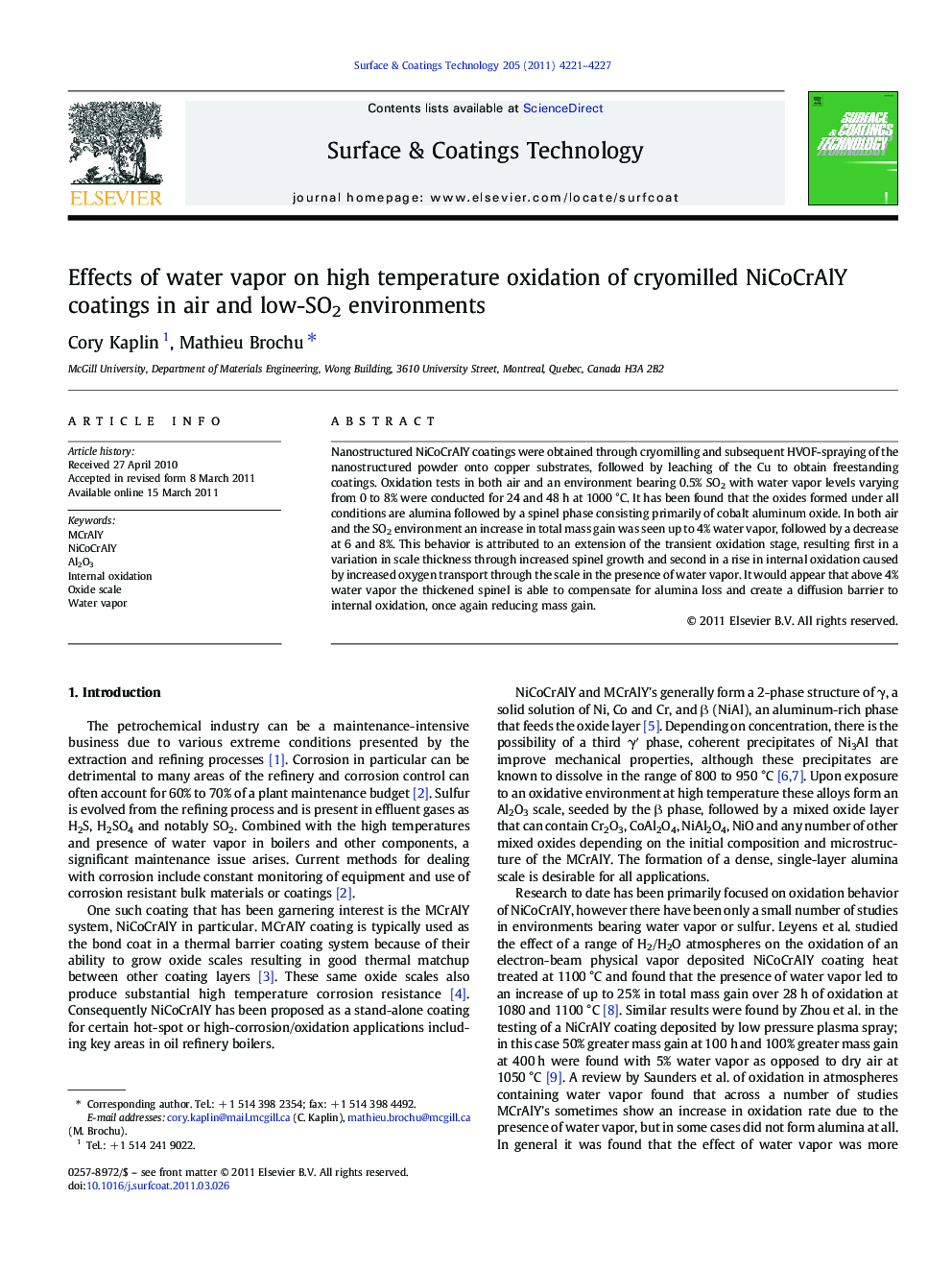| Article ID | Journal | Published Year | Pages | File Type |
|---|---|---|---|---|
| 1659262 | Surface and Coatings Technology | 2011 | 7 Pages |
Nanostructured NiCoCrAlY coatings were obtained through cryomilling and subsequent HVOF-spraying of the nanostructured powder onto copper substrates, followed by leaching of the Cu to obtain freestanding coatings. Oxidation tests in both air and an environment bearing 0.5% SO2 with water vapor levels varying from 0 to 8% were conducted for 24 and 48 h at 1000 °C. It has been found that the oxides formed under all conditions are alumina followed by a spinel phase consisting primarily of cobalt aluminum oxide. In both air and the SO2 environment an increase in total mass gain was seen up to 4% water vapor, followed by a decrease at 6 and 8%. This behavior is attributed to an extension of the transient oxidation stage, resulting first in a variation in scale thickness through increased spinel growth and second in a rise in internal oxidation caused by increased oxygen transport through the scale in the presence of water vapor. It would appear that above 4% water vapor the thickened spinel is able to compensate for alumina loss and create a diffusion barrier to internal oxidation, once again reducing mass gain.
Research highlights► The presence of low SO2 levels has very little effect on oxidation of NiCoCrAlY. ► The presence of water vapor causes an extension to the transient oxidation stage. ► A consequent effect of water vapor is an increase in scale thickness. ► Another potential effect of water vapor is internal oxidation. ► Internal oxidation may be limited at higher vapor levels due to scale thickening.
